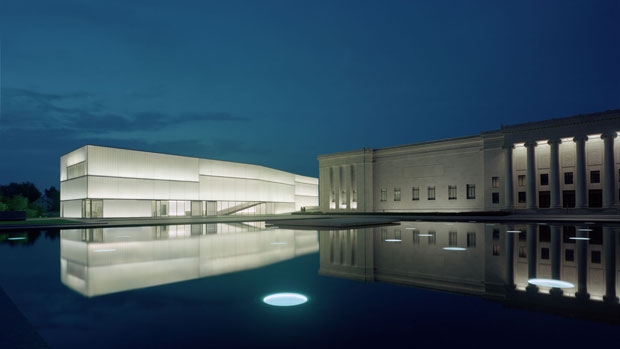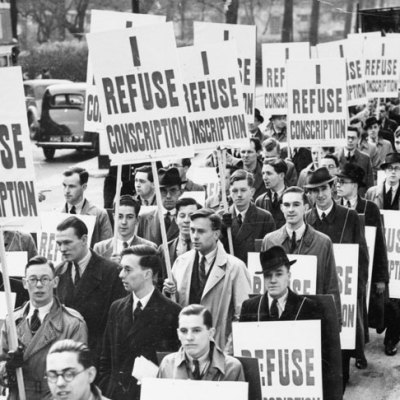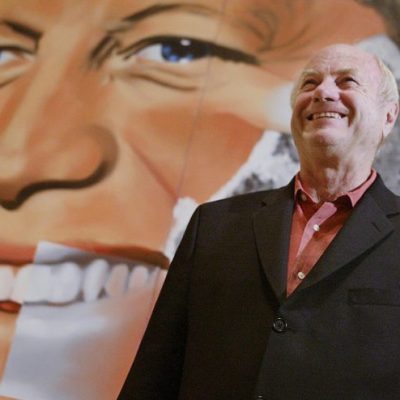Dazzling museum collections are found in some unlikely cities across the U.S. How did they get there? Here’s how it happened in Kansas City in the midwest state of Missouri. When the fortune left by William Rockhill Nelson (1841–1915) to buy art ‘for public enjoyment’ was released to the board of what would become the Nelson-Atkins museum, the only other U.S. museum with equivalent funds was the Metropolitan Museum of New York. It was the 1930s, the Great Depression was in full effect. The global art market was flooded with bargains but there were few buyers. The board’s experts and curators went on a monumental shopping spree. The acquisitions continued for years, from Laurence Sickman’s Asian triumphs to Patrick J. Kelleher’s European ones, while enlightened first director Paul Gardner initiated weekly late night openings and lectures in 1934 to entice local people to come and enjoy it all. Hence the collection, one of America’s finest, and the museum’s central position in Kansas City’s cultural life today.
Before we look closely at the museum, let’s back-track and look at Kansas City and its general reputation. This is what you might already know: that it was established in 1833 by the son of a Baptist missionary, John McCoy, whose general store was the last stop before wild territory to the west, into which the United States was expanding along the Santa Fe, California and Oregon trails – a can-do free spirit still pervades the city. You may also know about its mighty beef barbecues (this cattle town serves juicy cuts unique to the midwest), its jazz (Charlie Parker was born in the area, the American Jazz Museum is here), its baseball (here is the Negro Leagues Baseball Museum) and its home-grown U.S. president (Harry S. Truman).
But its biggest cultural star is the Nelson-Atkins museum. The collection is encyclopaedic, the pieces often top quality. Here, for example, you find one of the most important holdings of Chinese art outside of China, a world-class Indian collection, and European pictures that include Caravaggio’s Saint John the Baptist in the Wilderness (1604). American art ranges from fine 18th-century rooms to paintings by local-born artist Thomas Hart Benton. More recently, the Hallmark Photographic Collection of American photographs arrived in 2006 – the greetings card company was founded by the local Hall family – to enrich the already internationally important department. The Halls also funded Robert Morris’s Glass Labyrinth (2014) which joined some 60 pieces in the museum’s expansive sculpture park on its 25th anniversary.
The Nelson-Atkins Museum of Art in Kansas City, MO. Photo: Tim Hursley. Courtesy the Nelson-Atkins Museum of Art

In Kansas City’s sprawling, unpretentious suburbia, where quiet roads service family houses in tree-shaded gardens (‘Our rush hour lasts 15 minutes’, said one local), such individual philanthropy and commitment to the city have always been important. The museum’s story begins with local school-teacher Mary McAfee Atkins, whose wealth stemmed from her husband’s real estate success. On her death in 1911, she left $300,000 to build a museum. By 1927, the museum still not begun, the sum had increased to the then vast sum of $700,000. Her bequest was combined with that of William Rockhill Nelson, and in 1930, work on the Nelson-Atkins Museum began.
The elegant Beaux-Arts building, designed by the city’s favourite architectural practice, Wight and Wight, opened its doors in December 1933. Its façade has a splendid string of panels by New York sculptor Charles Keck, showing wagon trains of brave families heading out west into the unknown. Inside, so monumental and beautiful is the building’s double-height columned main hall that it is the setting for Kansas City’s annual debutante dance, the Jewel Ball. (The local Kemper family support this event and much else in the city, including the Kemper Museum of Contemporary Art, a nearby gem whose dynamic programme is matched by Chicago artist Frederick J. Brown’s bold decoration of its café walls.)
Today, local philanthropy continues with gusto at the Nelson-Atkins. This year, two transformative gifts by Kansas City natives Marion and Henry Bloch came to fruition. Henry Bloch and his brother made their fortune in a typical Kansas City way: by at first helping friends prepare their tax returns at $5 a time. Their company, H&R Block (they changed the spelling so their name would be pronounced correctly) would become the country’s biggest tax servicer; Henry was nicknamed ‘America’s tax man’.
The Bloch’s financial donation of $12m has funded the complete re-think and renovation of a quarter of the museum’s ground floor galleries. They now recount the story of European art from 1750 to 1950, mixing all media to ‘go back to the context’, says Catherine Futter, director of curatorial affairs. ‘We tell a new story about a changing world from an agrarian to industrial culture, from country to urban living. For instance, we see the artists as rebels, painting a new Paris that had bulldozed the medieval city.’
The central galleries contain the Bloch’s art donation of 29 Impressionist and post-Impressionist works that they collected over 20 years, with advice and encouragement from the museum’s former director Ted Coe. ‘Ted advised him with the long view that they would give to the museum’, says the present director, Julian Zugazagoitia, adding: ‘Henry is a pillar of the community and a civic leader, he’d only give to his home city. He is the kind of true philanthropist that is becoming rare: he could see how his collection would be better integrated and in dialogue with others works we have, not in a room of its own. Also, his renovation gift far extended his field of interest. We have a very good arts eco-system here, with a new generation of these pillars of society coming up.’
The Bloch gift is indeed seamlessly integrated into the collection; just a ‘B’ added to the wall label marks each work out. It is immediately clear what depth it adds to the rest of the collection. Curator Aimee Marcereau DeGalan points to an 1884 picture of Deauville by Eugène Boudin. Beside it hangs a Bloch addition: Boudin’s painting of the same subject made 11 years later. ‘It is much looser’, she says, ‘with more movement, a more intense mood’. Bloch’s first Impressionist purchase, in 1976, is here too: a fresh, engaging oil sketch by Pierre-Auguste Renoir of a Woman Leaning on her Elbows (1875–85). Bloch additions also include major works by Degas, Caillebotte, Manet, Sisley, Pissarro, Signac, Seurat, Van Gogh, Cézanne, Gaugin, Toulouse-Lautrec, Vuillard and, leaping on in time, the museum’s first Henri Matisse painting, the powerful Woman Seated before a Black Background (1942). To enjoy them all fully, the museum has a new location-aware audio guide: it knows which work you are standing in front of and tells you all about it – free of charge, it is too good a new feature to miss out on.
If Kansas City’s potent cocktail of superb art, beef and jazz goes down well, it is a short drive to enjoy other cultural mixes at St Louis, Crystal Bridges, Tulsa, Omaha and Des Moines.





